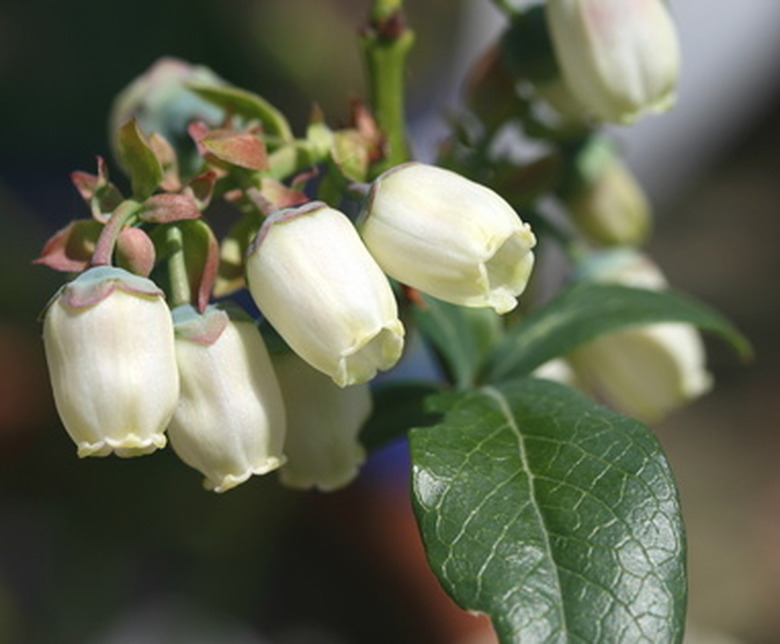Blueberry Plant Troubleshooting
According to the Ohio State University website, blueberries rank as one of the most popular fruits that are grown in the United States. This is because they are easy to grow, have a unique flavor and small, edible seeds. Blueberries are high in pectin and fiber, low in calories and sodium and contain no cholesterol. Just because blueberries are easy to grow does not make them trouble-free, but if your blueberry bushes appear unhealthy, diagnosing the problem is not difficult.
Step 1
Test your soil by digging a teaspoon of soil from around the base of a blueberry bush with a garden trowel. Then dig down 3 inches and take a second teaspoon of soil. Repeat this process along the drip line of blueberry bushes. Take these soil samples to your local extension service to have the soil's pH tested. Blueberries like slightly acidic soil with a pH that ranges from 4 to 5. If blueberries are grown in soil that has a higher pH, they will not thrive. You can gradually change the soil around blueberries by top-dressing with peat moss.
- According to the Ohio State University website, blueberries rank as one of the most popular fruits that are grown in the United States.
- Just because blueberries are easy to grow does not make them trouble-free, but if your blueberry bushes appear unhealthy, diagnosing the problem is not difficult.
Step 2
Pick a leaf from a blueberry tree and examine it closely. Leaves that are yellowed are showing signs of nitrogen deficiency. Leaves with slightly scorched tips or that curl into a cup shape may indicate that plants are deficient in potassium. Leaves that turn yellow or red in the margins but continue to have bright green veins may be low in magnesium or iron. Leaves that cup, show signs of yellowing and have shortened internodes may be suffering from blueberry stunt disease. Leaves that develop spots are suffering from a fungus known as leaf spot.
Step 3
Grasp a stem in your hand during the plant's winter dormant season and scan the bark. If there are red lesions on the tips, your bush has developed stem canker. Small, round bugs with a shell-like exterior are scale bugs. Dead twigs may be a sign of twig blight.
- Pick a leaf from a blueberry tree and examine it closely.
- Leaves with slightly scorched tips or that curl into a cup shape may indicate that plants are deficient in potassium.
Step 4
Take infected blueberries from your bush and look at them under a magnifying glass. Berries that become desiccated on the plant are infected with the fungicide called mummy berry. Berries that rot on the plant are affected with fruit rot. Berries that drop early and contain entry scars have been infested with insects.
Step 5
Pull any bugs off of your plants. Compare them with a North American insect field guide such as "The Audubon Society Field Guide to North American Insects and Spiders" or the "National Wildlife Federation Field Guide to Insects and Spiders." You can also place an insect into a container and take it to your nearest land grant college. An agent or instructor on staff should be able to help you with your identification. Common insects that affect blueberry plants include cutworms, cranberry weevils and fruit worms.
- Take infected blueberries from your bush and look at them under a magnifying glass.
- Berries that become desiccated on the plant are infected with the fungicide called mummy berry.
Step 6
Cut stems lengthwise with a grafting knife if they appear to die back in midsummer with leaves that turn red, yellow and brown. If the wood in the stem is discolored brown, the plant is suffering from stem blight.
Step 7
Get down on your hands and knees and look for signs of sawdust near the base of the plant. Sawdust is an indicator of the presence of stem borers.
Things Needed
- Garden trowel
- Peat moss
- Magnifying glass
- Plastic container
- Grafting knife
